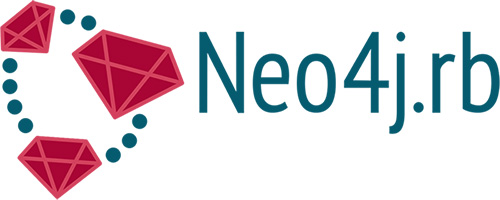
If there are two things that I enjoy most in my technical life it would be
Neo4j and
Ruby.
Both give me the one thing I want most from the tools I use: the ability to abstract out the tedious so that I can focus on the bigger picture. That’s why I love working on
the Neo4j.rb project and why I was excited to work on yet another set of
RubyTapas-style screencasts about
using Neo4j with Ruby.
In
previous episodes I covered the basics of setup and usage of the
ActiveNode module. Today I’d like to present to you the latest three episodes I’ve put together to help you dive deeper into the wonderful world of Neo4j.rb:
Neo4j.rb Screencast #4 – Association chaining
https://www.youtube.com/watch?v=pUAl9ov22j4
Association chaining is without a doubt my favorite tool from the
ActiveNode module. While
Cypher provides an excellent high-level way to make complex and deep queries on your data, association chaining provides an
even higher level of abstraction. By defining your relationships ahead of time, you can traverse your nodes with simple Ruby method call chains. This makes your queries more readable, more re-usable and more fun!
Neo4j.rb Screencast #5 – ActiveRel
https://www.youtube.com/watch?v=f7NNGIWZ1pE
One of the most brilliant and often overlooked parts of Neo4j is the ability to use relationships as another entity in your data model. Sometimes properties don’t belong on one node or the other but rather on the relationship between them. In this case the
ActiveRel module helps you be confident in your relationships by supporting property validations, object callbacks (before/after, create/update/save) and defining whatever methods you might use for an object model.
Neo4j.rb Screencast #6 – Deeper Querying
https://www.youtube.com/watch?v=UFiWqPdH7io
ActiveNode and
ActiveRel are great for getting started and for doing the typical, simple tasks that need to be done. Of course, sooner or later you need to dig down into the Cypher. This could be for lots of reasons including taking advantage of the expressiveness of the Cypher
MATCH ASCII art syntax or to build complex queries. You can build your own Cypher strings, but you can also use an API which allows you to build Cypher in ways that allow you to progressively build and share queries and which take advantage of Neo4j’s parameters natively.
I hope you enjoy these new screencasts in this series on Neo4j and Ruby on Rails, and let me know what you think.
UPCOMING WEBINAR: Metadata and Asset Control Using Ruby on Rails and Neo4j
Register for this webinar on
10 September 2015 at 9:00 a.m. Pacific (18:00 CEST) to learn how to create simple and reusable code to build an access control system using Ruby on Rails, presented by Brian Underwood.
Catch up with the rest of Brian Underwood’s Neo4j – Ruby on Rails Screencast Series:

 If there are two things that I enjoy most in my technical life it would be Neo4j and Ruby.
Both give me the one thing I want most from the tools I use: the ability to abstract out the tedious so that I can focus on the bigger picture. That’s why I love working on the Neo4j.rb project and why I was excited to work on yet another set of RubyTapas-style screencasts about using Neo4j with Ruby.
In previous episodes I covered the basics of setup and usage of the
If there are two things that I enjoy most in my technical life it would be Neo4j and Ruby.
Both give me the one thing I want most from the tools I use: the ability to abstract out the tedious so that I can focus on the bigger picture. That’s why I love working on the Neo4j.rb project and why I was excited to work on yet another set of RubyTapas-style screencasts about using Neo4j with Ruby.
In previous episodes I covered the basics of setup and usage of the 






